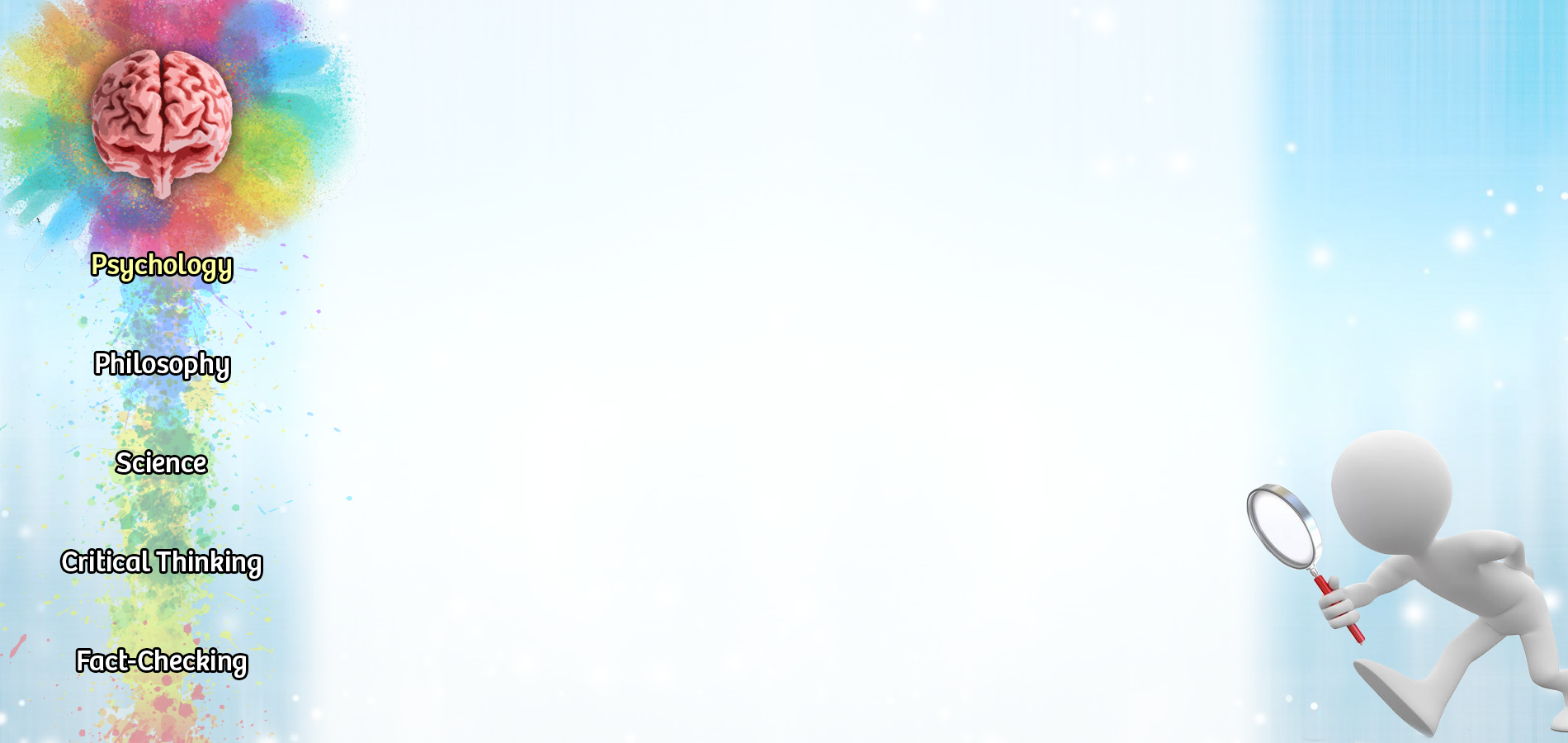
The Conspiracy Mentality
03 - The Human Brain


As I've mentioned previously, the alternative-thinker (you, or your friend) doesn't just believe in conspiracy theories but has a specific mentality. It's a way of thinking as well as a set of claims about the world.
This is important because if we understand the mentality, and understand how our brains work, we can start to understand not only why everyone from a cleaner, to a medical doctor, can be influenced by these very enticing conspiracy theories, even if they lack the conspiracy mentality.
The human brain is a pattern recognition machine. It's how we've evolved to survive. Those who didn't understand patterns in the early days of man, wouldn't have lasted very long. From social patterns in how people behave, behavioural patterns in animals, or even how the environment looks. Those without pattern recognition skills would be unaware of predatory danger and also more likely to get eat poisonous food.
Any sources I have, that I quote or reference will be hyperlinked.
Frontiers in Neuroscience published the following study in the US National Library of Medicine: Superior pattern processing is the essence of the evolved human brain.
In this study, the author mentions the incredible memory of migrating birds:
"Accumulating evidence suggests that migrating birds encode navigational maps within the neuronal circuits of their brains. For example, in one study it was shown that adult crowned sparrows navigate toward a wintering area known from the previous year and can successfully correct for displacements of over 1000 miles"
This is relevant to us, as just a little later:
"The human brain has retained many features of brain structure and cellular organization of the brains of birds and lower mammals, but has greatly elaborated upon them by developing more robust cortical neuronal networks involved in the processing of visual and auditory patterns."
In another study, which is referenced in this same study is: Mainstream Science on Intelligence: An Editorial With 52 Signatories, History, and Bibliography
"Intelligence is a very general mental capability that, among other things, involves the ability to reason, plan, solve problems, think abstractly, comprehend complex ideas, learn quickly and learn from experience. It is not merely book learning, a narrow academic skill, or test-taking smarts. Rather, it reflects a broader and deeper capability for comprehending our surroundings-“catching on,” “ making sense” of things, or “figuring out” what to do."

When you hear that something is dangerous, or isn't what it seems, that everything is connected, nothing is random or disconnected, and you make a quick decision that this can't be a coincidence, you aren't doing something stupid, you're doing what your brain evolved to do.
When you make connections between two seemingly separate things and try to piece together a narrative, when you try to make sense of the unknown and formulate a quick response explanation, that's exactly what our brains are meant to do.
The alternative-thinker is always sceptical of the probability that events aren't connected. You might have seen, or even said yourself, "They're connected somehow, I know it". When presented with events, is the first thing you think of "how are these connected?", or "How does this fit?". If so, you know exactly why you do this. It's a sign of natural intelligence.
Unfortunately, that would only apply if all information was correct, and we know that that just isn't true. There exists out there, a metric ton of false information, half-truths and misleading claims. For this reason, we need evidence, fact-checked sources and we need to actively understand and suppress our in-built responses, to prevent us from being tricked by our own brains. Our greatest strength is also our greatest weakness.
This is exactly the realisation I came to when I stepped back and realised that I didn't actually know anything. I had a conviction of what the truth was, and found ways for every event, every piece of information to fit within it. This is why I say the alternative-thinker works from the conclusion first, then works backwards.
One final thought before we move on. There is an article by TIME called: "Why Smart People Still Believe Conspiracy Theories" that references a study called: Epistemic rationality: Scepticism toward unfounded beliefs requires sufficient cognitive ability and motivation to be rational. I can't read the study without paying, but I will provide the TIME summary:
"There’s a lesson here for all of us: It’s not enough just to have the ability to think analytically, but the inclination to do so, too."
I'd like to close this with something fun. There is a term called "pareidolia", which is when we see faces where there are none. In an article by Psychology Today, a better description of this can be read, but I will quote the conclusion below. It can be pretty funny to look at images relating to this, but it does have a serious evolutionary application, and relevant to the human brain subject of this page.
"It is also important to note the evolutionary consequences of seeing a pattern where there is none (a false positive) as opposed to failing to see a pattern where there is one (a false negative). It seems clear that the consequences of a false positive, especially when it involves the recognition of a predator, are not as severe as the consequences of a false negative. In other words, seeing a lion where this is no lion is rarely lethal. However, failing to see a predatory lion, of course, would often be deadly."
The next page will be covering an extensive research paper explaining the nature of illusionary patterns and their role in the belief in the supernatural and conspiracy theories.
Next page: Illusory Patterns
